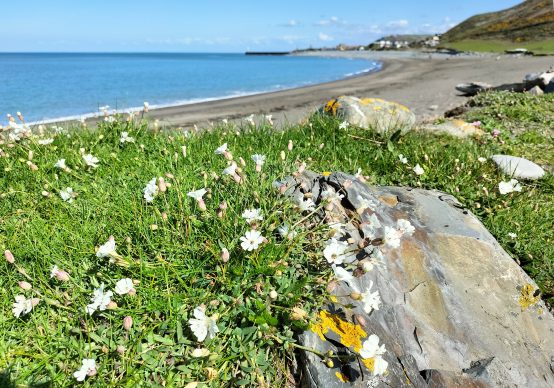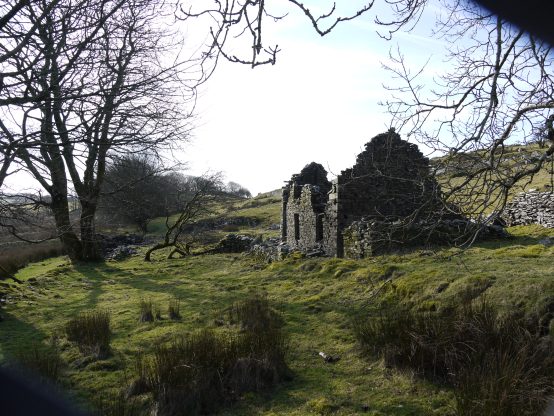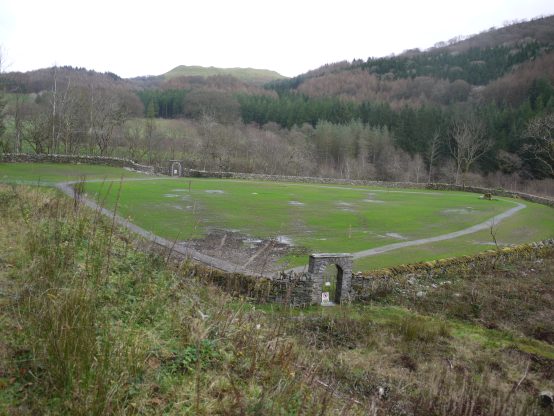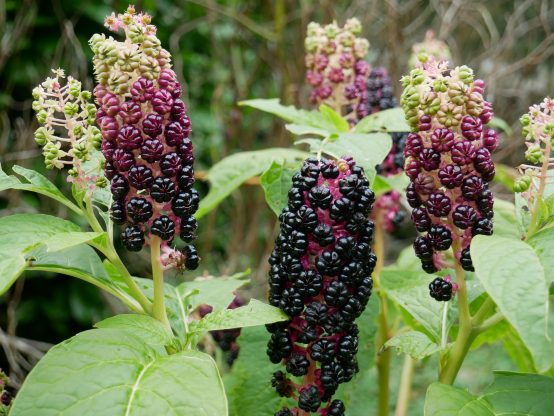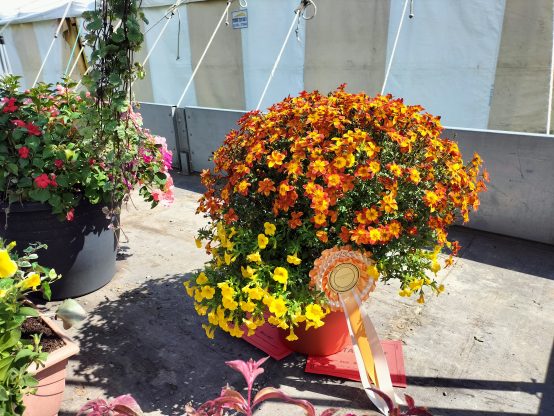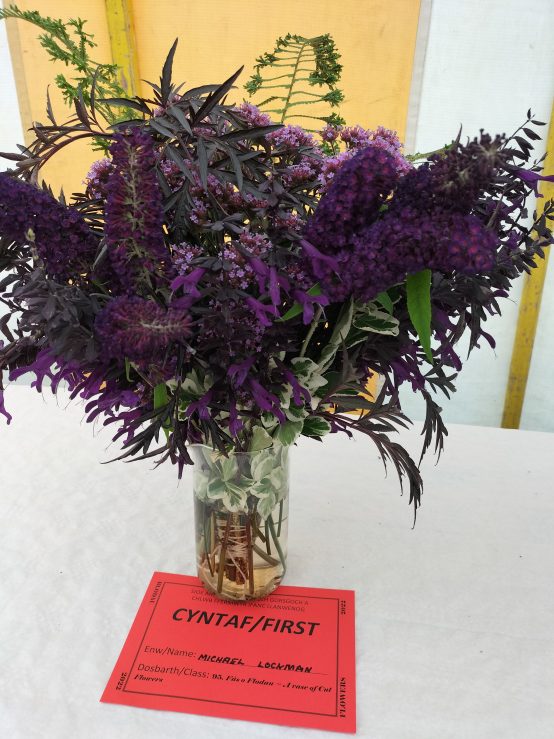by the Curious Scribbler
When I got to know Kay Humphreys she was a tiny elderly lady living at the far end of the long low row of ancient cottages in the shade of a huge acacia tree at Pontllolwyn in Llanfarian. There was just one chair for guests which could be reached with difficulty, for she lived a frugal life hemmed in by huge sloping stacks of weekly magazines, the Spectator, the New Statesman, The Week. The cottage was very much unimproved, cluttered with the memorabilia of her long life.
Loves in her life included the big house, Aberllolwyn, (which had formerly belonged to her clergyman uncles Tom and Griff Humphreys, and which she always felt was really hers), and cats. A rector’s daughter herself, she delighted in tormenting vicars with theological questions on the subject of cats’ souls, and whether she would meet her favourite cats in heaven. One of these favourites was our cat, Kevin, a handsome un-neutered tabby tom who in the 1990s often attended the services at Llanychaiarn Church, where she was a worshipper. On Sundays when Kevin failed to put in an appearance, Kay would often appear at our door, imperiously asking ” Where is Kevin?” Kevin became a beneficiary of her will – a legacy which he did not collect because he predeceased her.
In 2004 she endowed her own memorial bench outside the church. Ever practical, she donated it while she could have the use of it, and on a chilly April morning, eighteen years ago today, a party of relatives and villagers assembled around her as the Revd Hywel Jones dedicated the bench.

The dedication of the Bench on 3 April 2005
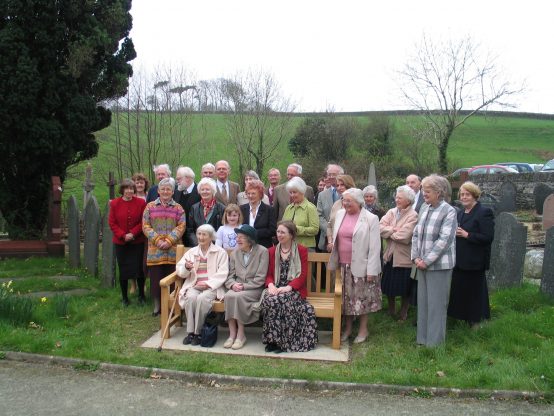
Kathleen Humphreys on her bench, with cousin Mary Ellis and niece Cathy McGregor
By this time in her life Kathleen Humphreys was best remembered for her long-running column in The Cambrian News, ” Kay’s Corner” a weekly opinion piece, which drew on a wide knowledge of folklore, gardening, theology and her own strong ideas. She had always been a writer, and now, as I assemble her archive and diaries for donation to the National Library of Wales, one gets an insight into a remarkable woman. She was born in 1916 into a clergy family and grew up at Llangan Rectory near Bridgend. Her sixteen-year-old diary reveals a girl on the brink of adulthood, aware of male eyes upon her, and already sure that the life of a married woman is not for her. Aged nineteen she was working in London, going to auditions, and working for Central Editing ( would this be the BBC?). Her London diaries from the war years unfortunately do not survive.
Her big literary break came in 1959 when she published Days and Moments Quickly Flying under the pen name of Perry Madoc. It is significant to remember how many women in the early 20th century adopted male cognomens to increase their chance of being taken seriously. The manuscript had been first submitted under the name of “Pen Severn”. Perry Madoc was published by Collins both here and in America and was very favourably reviewed in The Spectator, and compared with Evelyn Waugh’s Decline and Fall. Its knowing portrayal of homosexual school teachers and vulnerable schoolboys would have perhaps been expected of a male author.
Kathleen Humphreys’ 1960s diaries reveal a woman who felt her career blighted by the influential Literary Advisor to Collins, Milton Waldeman. There is more than a suggestion that his rejection of her next manuscript was influenced by her rejection of his sexual advances. She was no longer resident in London, having moved to Pontllolwyn to be near her uncles. Two other novels survive in manuscript: The Ink Blot ( which was rejected by Collins and by Gollancz 1960) and The Coal Scuttle Triptych ( rejected by Heinnemann 1961). A later novel The Washerwoman of Sevigny was rejected by Hutchinson in 1989. It may have been a disadvantage that she was no longer a face on the London scene, but she was certainly publishing articles and short stories in Punch, in John O’London’s Weekly and in Argosy. From the 1960s she was also a regular contributor to The Cambrian News.
All her life, Kathleen Humphreys needed to earn a living to supplement her income as a writer, and did a number of jobs in Aberystwyth. Her Pontllolwyn diaries span fifty years 1953 to 2004, and record the experiences of her daily round. Her accounts include Rosemary Christie, mother of the actress Julie Christie and mistress of Douglas Hague of the Royal Commission for Ancient and Historic Monuments, the Jervis family of Bryneithin, the geologist Nancy Kirk, Prof and Mrs Parrott, the Thomsons of Glanpaith, the Roberts of Crugiau, the Mirylees at Nanteos, the Condrys and the Chaters as well as many local neighbours. She was active in the CPRW, the Cardiganshire Horticultural Society, the Ceredigion Antiquarians, and in art and pottery classes. She never owned a car, and travelled everywhere on foot or by bus, chatting to all she met and often expressing her delight in the scenery, the wildflowers and the weather.
Her handwriting is hard to decipher, but the diaries are surely a treasure trove of local life, as well as a signpost to a huge output of published writing hidden away in old newspapers and magazines. I end with a small sample which I have transcribed, the diary entry for 18 July 1959.
Last night I wandered up to Aberllolwyn like a ghost, jumping down over the wall from the woods, now overgrown, and the back all high weeds smothering the wallflowers and sweet williams I had in the old basins and the flowers against the wall! It was exactly like a dream in the dusk with all silent and deserted. I felt so desolate and so acutely homesick I cried bitterly and rained down curses on Uncle Griff and his smug wife and their smug house and on Providence for losing me my home and my little cat. In two months I have only seen him once, briefly, and then he looked scared, thin and ill.
In vain I called him, and I sat on Uncle Tom’s seat in the field in despair. On one last impulse I went down along the bottom of the orchard to the farm and there coming through the entrance to the Dingle from the farm was a glimmer and red and white. My darling Ginger! And in the trim, fat as butter and coat very sleek. How pleased he was to see me, Kissing and rubbing my face with his nose.
By this time it was pitch dark, and warm, and I resolved to spend the night with him on the hay stack. I climbed up a very steep ladder, Ginger clinging on and purring. We settled down. At first it was very cosy with heat rising from the rick but presently my temperature dropped and I got chilly. I tried to arrange these angular blocks and fetched an old raincoat of Dai’s from below. Ginger bore it all very well and when I was too fidgety stationed himself near, so I could hear him purring gently.
Later there was a terrific row below and footsteps. We were rather alarmed, me especially, but peeping over the top I saw it was Dai and Mrs Hughes with a torch. What were they doing? Extraordinary noises of clanging zinc. They were arranging the fallen zinc sheet from the garden wall before the calf shed to keep the geese in. And I had nearly settled in there with Ginger for the night! Why put the geese there?
The haystack very humid. At daybreak Ginger and I went down through the Dingle to the cottage and into bed. It is wonderful to have that warm lump once again snuggled up on the bed covers and his purring and sonnerations. At 2.30 I took him up to the farm and asked Mrs Hughes to give him milk in the cowshed, which she does, the part behind the stalls where the dogs can’t reach. There are several tins of catfood in the farm piling up because no-one has seen Ginger for days and days.
Kathleen Anne Humphreys, Perry Madoc or Kathleen Hatling ( as she was published in Argosy 1944) deserves to be disambiguated and rediscovered.
Like this:
Like Loading...




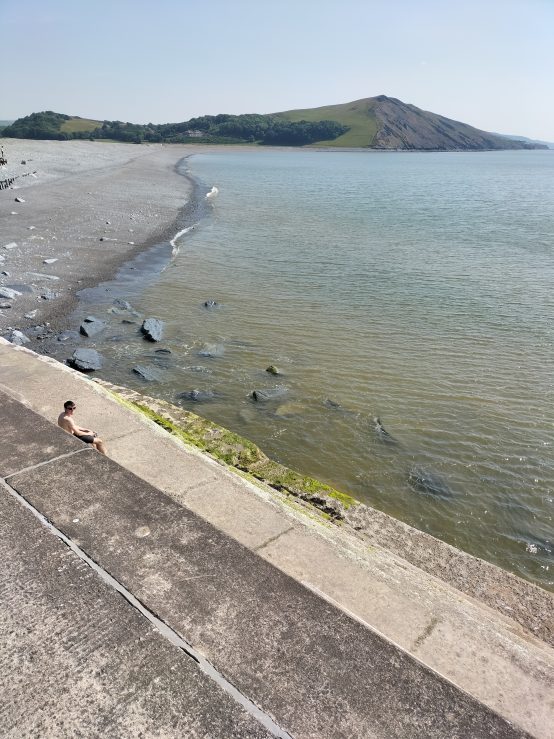

 e Bags of stone are being piled up against the retaining wall, swung in on the crane arm of an Afan lorry, and while I watched a yellow digger was engaged in filling up the small sinkhole and tamping it down.
e Bags of stone are being piled up against the retaining wall, swung in on the crane arm of an Afan lorry, and while I watched a yellow digger was engaged in filling up the small sinkhole and tamping it down.

